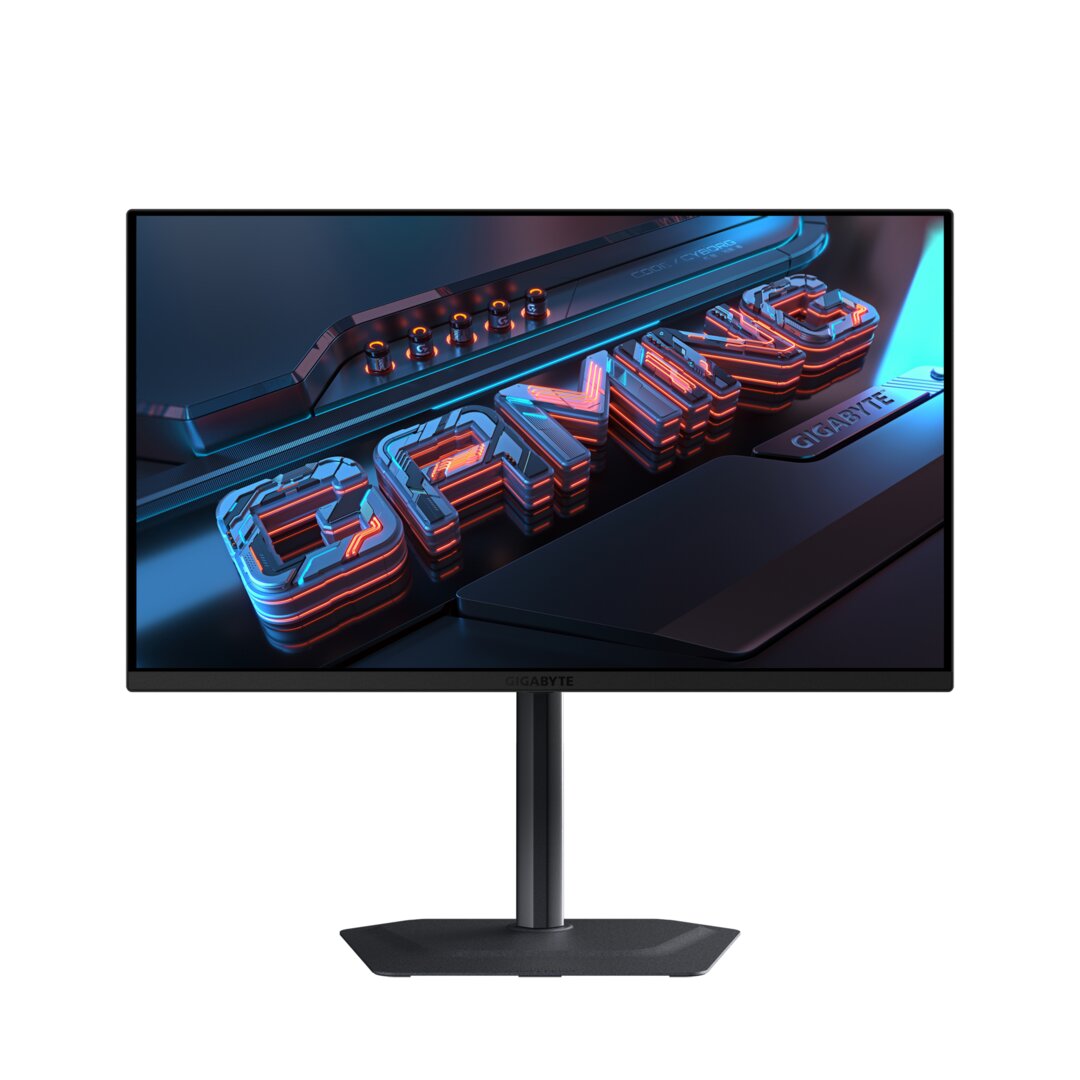Gigabyte MO32U & MO27Q2: New 16:9 QD-OLED monitors with USB-C and KVM 63 comments

Gigabyte has added two new OLED monitors to its now-expanding lineup. The MO32U offers 4K UHD on approximately 32 inches at a refresh rate of 165 Hz. The MO27Q2 has significantly fewer pixels with WQHD on 27 inches, but the refresh rate is significantly higher at 240 Hz.
MO32U and MO27Q2 now official
The two newcomers do not belong to the designated Aorus gaming family and are therefore designed to be a little more discreet and do not offer RGB lighting. However, they should be cheaper than their Aorus counterparts.
QD-OLED in 16:9 with typical values
The Gigabyte MO32U’s 3,840 × 2,160 pixels mean a pixel density of 140 ppi with a screen diagonal of 31.5 inches. With the MO27Q2, 2,560 × 1,440 pixels on 27 inches delivers just 109 ppi. Both panels would come from Samsung and would therefore use QD-OLED technology. Information on response time (0.03 ms), color depth (10 bits) and color space coverage (99% DCI-P3) is typical. The extremely high contrast of 1.5 million to 1 also applies to virtually all OLED monitors.
Gigabyte MO32U Gaming Monitor

Gigabyte MO32U Gaming Monitor (Image: Gigabyte) Image 1 of 9
The brightness must reach a maximum of 250 cd/m² over the entire surface (Average Picture Level 100%). For tiny areas (APL 3%), up to 1000 cd/m² can be achieved in HDR mode. There is also DisplayHDR True Black 400 certification.
HDMI 2.1 meets DisplayPort 1.4, USB-C and KVM
The monitors do not yet support the new DisplayPort 2.1 video standard. Instead, a DisplayPort 1.4 is used. Both HDMI sockets operate according to the latest HDMI 2.1 standard. The individual USB-C port also transmits image signals via DP Alternate Mode. This is convenient, for example, when a laptop is connected via it. Thanks to the integrated KVM switch, it can be supplied with a mouse and keyboard as long as the peripherals are connected to the monitor’s two USB-A ports. However, single-cable operation via USB-C is limited because the power supply (USB Power Delivery) only delivers 18 watts, which is too little for most laptops.
Gigabyte MO27Q2 Gaming Monitor

Gigabyte MO27Q2 Gaming Monitor (Image: Gigabyte) Image 1 of 9
When it comes to ergonomics, there is little to be desired when it comes to height adjustment, tilt, swivel, and swivel. Optionally, the mount can also be replaced with a monitor arm, for example using the VESA device.
Gigabyte specifies power consumption at 41 watts for the MO27Q2 and 54 watts for the MO32U. The values are relatively high for modern monitors. However, it is possible that USB power was taken into account here.
Price, specifications and availability
Even though the two OLED monitors are considered officially launched when the Gigabyte product pages are activated, there is still no information on the market launch and prices. The editorial staff questioned the manufacturer on this subject and will provide a response if necessary.
Updated November 21, 2024 at 10:45 a.m.
When asked by the editorial staff, Gigabyte said that both monitors would be available in Germany in the first quarter of 2025. Prices have not yet been revealed.
Panel MO32U MO27Q2 QD-OLED diagonal 31.5 inch 27 inch Resolution 3840 × 2160 2560 × 1440 Aspect ratio 16:9 Pixel density 140 ppi 109 ppi Contrast ratio 1.5 million: 1 Brightness (maximum) ) 250 cd/m² (SDR, APL 100%)
1000 cd/m² (HDR, APL 3%) HDR display True Black 400 color space 99% DCI-P3 FreeSync/G-Sync AMD FreeSync Premium Pro, Nvidia G-Sync compatible? Color depth 10-bit Response time 0.03 ms (gray to gray) Refresh rate 165 Hz 240 Hz Video inputs 2 × HDMI 2.1, 1 × DisplayPort 1.4 Audio Headphone jack, speakers (2 × 5 W) USB 1 × USB-C (upstream, DP Alt, PD 18W), 2 × USB-A 3.2 (downstream), 1 × USB-A 3.2 (upstream) Screen tiltable (-5°/+21°), rotatable (-15°/+15°), height adjustable (130 mm), swivel (90°) Themes: Screens OLED Monitors QD-OLED

Élodie compares monitors for resolution, refresh rate, and colour accuracy to meet gamers’ and professionals’ needs.

